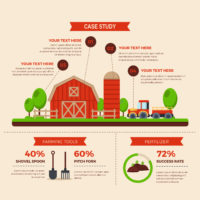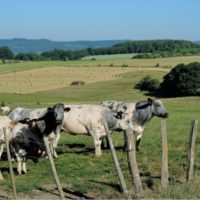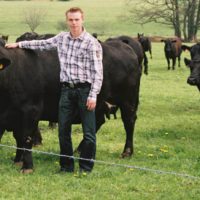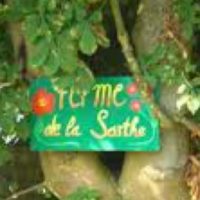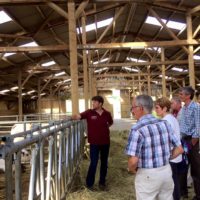Legume species and management & sheep breed & adaptation of seeder to farm soils
Description
The farm that belongs to Giancarlo Littarru is located in South West Sardinia (Italy).
The main innovations adopted by the farmer are:
- Legume-based mixtures. The farmer cultivates sulla, subterranean clovers and serradella. The latter species is cultivated in mixture with cereals (wheat or bar-ley). In the mixture, cereals are seeded with a reduced seeding rate. With the first rains, serradella re-sprouts and can be grazed as pure stands. This strategy allows to carry out soil tillage every two years. The farmer is adopting the same strategy for the first time also with sulla.
- Sheep breed. The farmer introduced a second sheep breed in his farm (the Is-raelian breed Assaf) to increase milk production. He raises the Assaf sheep sep-arately from the Sarda sheep, since these breeds have different diet require-ments. He manages also the birth seasons separately for each breed.
- Machinery. The farmer had the idea to modify his precision seeder: the seed distributor is mounted on the front of the tractor while a heavy soil roller oper-ates on the back of the tractor. In this way, he can sow and cover seeds in one passage.
Reason for the innovation
- Reduction of costs for forage production
- Increase of farmer income
- Increase milk production
Farm description
Environment
- Soil types: clay soils, acid pH
- Climate: Mediterranean climate
- Altitude: 140 m a.s.l.
- Slope: 10%
Grassland management
- Grazing: Yes
- Grazing management type: rotational grazing
- Length of the grazing season: 12 months
- Forage conservation type: Hay
- Animal diet integrated with concentrates (silage, beet pulp, beer threshing)
- Fertilisation rate: 150-200 kg ha-1 of Diammonium phosphate (for forage crops and cereals, respectively), and 140-160 kg ha-1 of ammonium nitrate during the crop growth
- Manure available to fertilise 7 ha each year (the manure fertilization is repeated in the same plot after 3 years)
Structure
- Annual Work Unit: 1 full time and 1 seasonal worker (10 months)
- Agricultural Area : 87 ha, 82 ha UAA:
- 45 ha, mixtures of cereals (oat, barley) or grasses (ryegrass) and pasture legumes (balansa clover, subclovers, serradella, sulla) used exclusively for grazing
- 16 ha, cereals used for grain production
- 16 ha, annual forage crops (mowed only)
- Activity: dairy sheep raising (Sarda and Assaf breeds)
- Number of heads (LSU): 50
- Stocking rate referred to total farm area: 0,61 LSU per hectare
Animal performance
- Milk production: 260-280 l per head per year (Sarda) and 430-480 l per head per year (Assaf)
- Meat production: 450 milk lambs per year, slaughtered 28 days after birth (carcass weight: 6-7 kg)
Why it is working
The farmer’s curiosity and his attitude to innovate are key determinants.
The farmers payed a particular attention to improve working conditions adopting strategies to reduce the time spent in agronomic practices.
The farmer has a great experience in detecting animal requirements in terms of diet
Additional information
| Farming system | conventional farming |
|---|---|
| Domains of innovation | animal type (breed), forage mixture, legume management – Annual legumes, legume management – Perennial legumes, machinery, tools |
| Main types of animal | dairy sheep |
| Country | Italy |
| Product type | Farmer portrait |
| Language | English, Italian |
